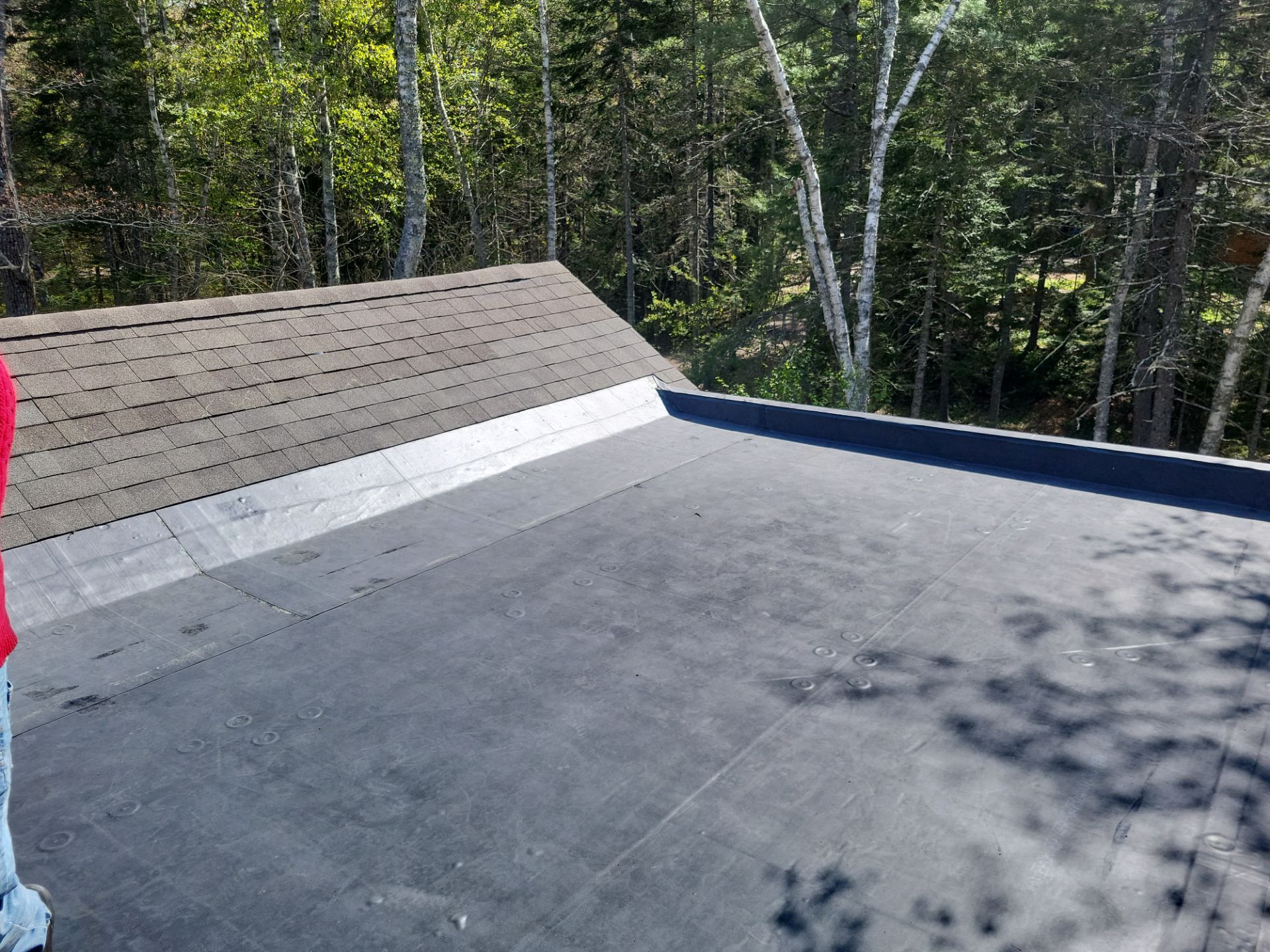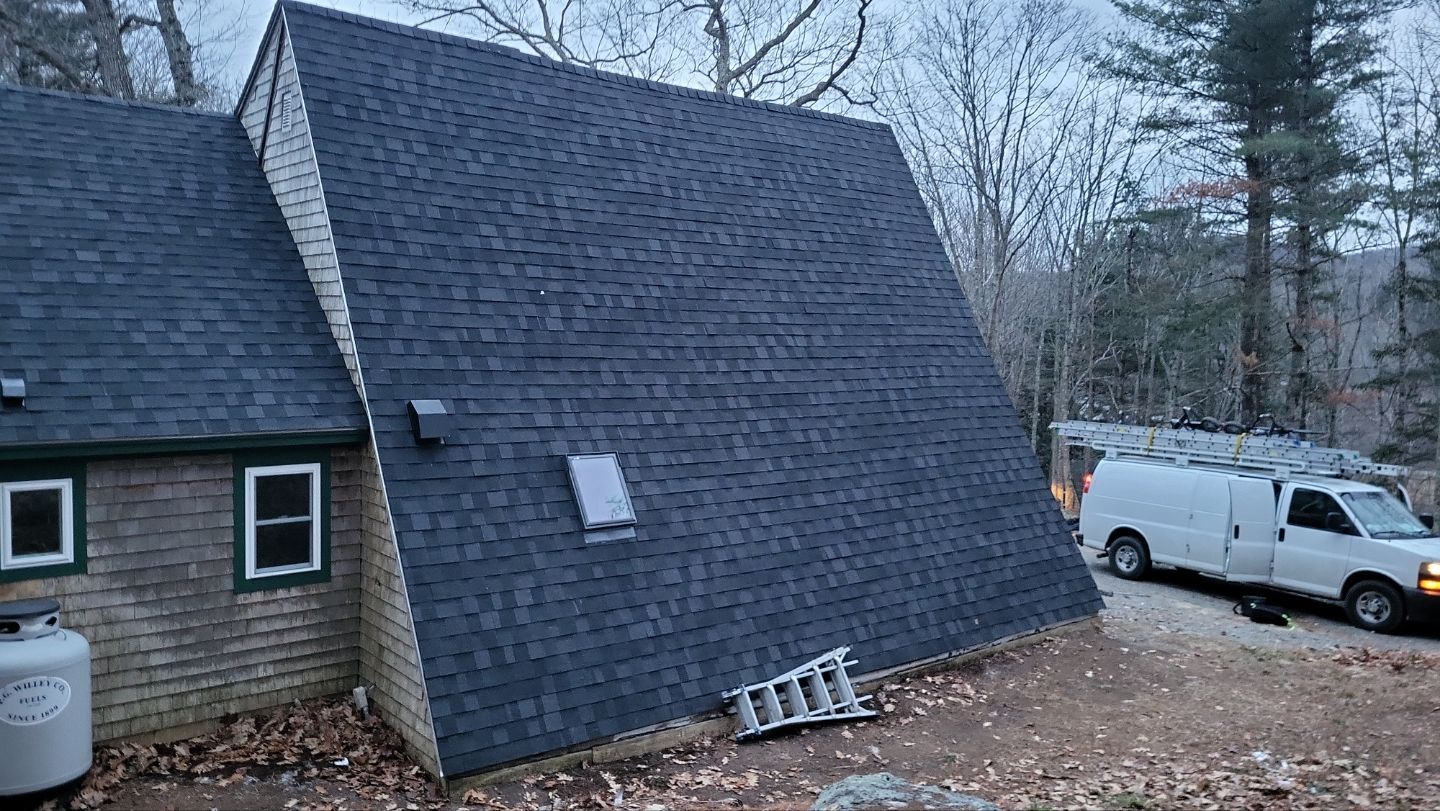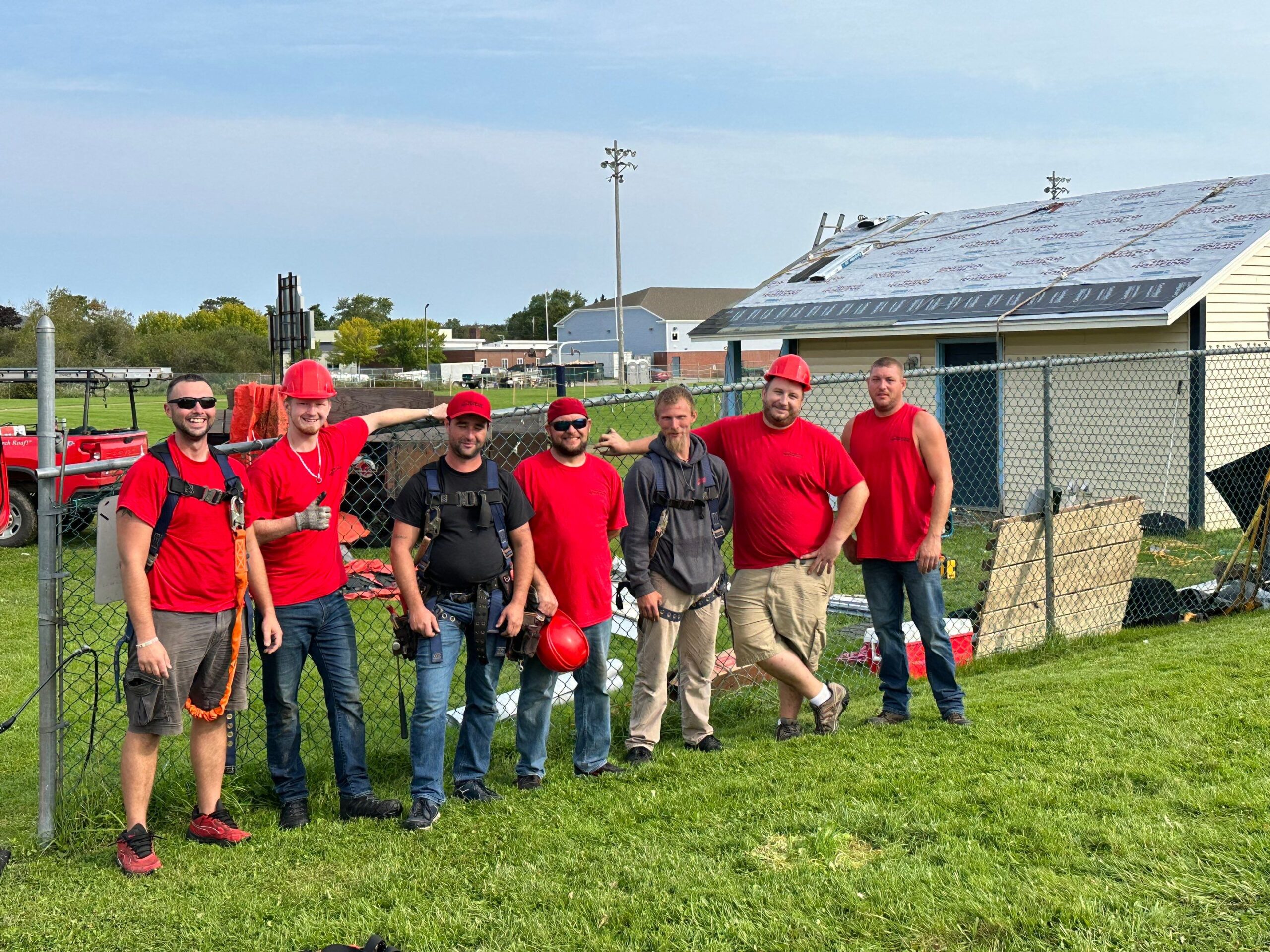- Heavy snow loads stress framing and can bow roof decking
- Freeze–thaw cycles widen gaps and weaken roofing materials
- Ice dams cause leaks, from slow drips to major water damage
- Wind, storms, and hail loosen shingles and speed up wear
- Proper materials, upkeep, and ventilation protect roofs year-round
If you ask roofing contractors in Rockland or beyond, they’ll tell you roofs in Maine have to work overtime. Long winters, fast temperature swings, and sudden coastal storms push even tough materials to their limits. Snow load, ice dams, and steady winds keep showing up month after month. Summer’s heat and sun still matter, but the harshest tests come when the thermometer dips.
Knowing how weather stresses a roof helps you spot issues early and plan smart maintenance, prompt repairs, or a proper replacement. Read on for a closer look at the impact of various weather conditions.
How does bad weather affect my roof?
Weather strains roofing in different ways and is one of the main factors that impact a roof’s lifespan. In Maine, signs of bad weather on a roof usually appear during cold months, though wind, rain, and summer sun add their own stress. Though newer materials and features tailored for the region make this less of a concern, here’s how bad weather can affect your system:
1. Snow load & compaction
Snow’s heavier than it looks, especially after it settles and packs down. Low slopes and wide valleys hoard that weight, so the load puts extra pressure there and can even bow the decking. Refreezes bring more issues, but sheer weight is a problem on its own. That’s why it’s so important to properly manage snow load on your roofing, no matter the material.
2. Freeze & thaw cycles
The situation can be made even worse by Maine’s constant freeze-thaw cycle. Temperatures rarely hold steady, so small gaps in shingles and flashing open and close over and over. Meltwater seeps in, freezes again, and gradually forces those gaps wider. What looks like a solid surface in November may be far weaker by spring.
3. Ice dams
Those freeze-thaw swings and heat escaping from the attic melt the roof surface while eaves stay cold. Water runs down, refreezes at the edge, and forms a ridge that pools new meltwater. That water can work under shingles, damage surfaces, and lead to various kinds of roofing leaks. These leaks can be tiny and slow or sudden and obvious, but all of them are serious.
4. Wind & storms
When storms roll in, the roof takes on a different kind of stress. Wind gusts tug at shingles and strain ridgelines, while driven rain and snow push moisture into seams that might otherwise resist a gentle shower. Severe weather only amplifies this. Hail can bruise asphalt and even dent metal panels, and leaks spread quickly. You may not need a roof replacement after a storm, but always take even just a single loose shingle seriously.
5. Heat & sun exposure
Summer doesn’t let up either. Long days of sun dry out shingles and make them brittle, while the daily cycle of heat expansion and cool contraction can work fasteners loose and weaken sealants. All of this is then compounded by the shock of winter cold only months later. This seasonal contrast shows up as curling, cracking, or general wear.
How can I protect my roof from extreme weather?
Protecting your system from extreme weather isn’t just one thing, it’s a mix of smart selections, practical upgrades, and steady care. Here’s where to focus:
1. Make sure you have the right system
It’s not always possible to swap out a system on a whim, but if you’re currently choosing roof replacement materials, make sure to pick a system built for Maine’s climate. High-quality asphalt shingles remain a dependable, affordable option. Standing-seam metal brings a premium, low-maintenance upgrade, while EPDM rubber is a solid choice for low-pitched or flat sections.
2. Invest in additional features
There are plenty of accessories you can add that can make a big difference in how a roof performs. Seamless gutters move water away cleanly, while leaf guards keep them clear with less effort. Snow breaks slow heavy drifts, and ice barriers stop refreezing meltwater from sneaking under shingles. Each addition chips away at the risks our weather brings.
3. Regularly inspect your roof
Plan for inspections in fall, spring, and after any major weather events. If there are loose shingles, loose flashing, popping nails, or signs of wear, it’s important to catch them early. They may not cause trouble right away, but any small issue puts you one severe-weather day closer to costly repairs.
4. Keep surfaces as tidy as possible
A little debris won’t hurt, but piles of snow or ice can. If you leave them to sit, that buildup becomes water waiting for a way in. At minimum, clear the first few feet above the eaves with a rake. When conditions are risky or buildup is too heavy, don’t hesitate to call the professionals.
5. Make sure gutters & downspouts are clear
When they’re clear, these channels carry meltwater away from the roofline. But when you neglect clogged gutters and downspouts, water starts pooling along the edge and can then seep under shingles and feed ice dams. Make sure they’re clear before the first freeze and after all the leaves fall.
6. Manage attic ventilation & insulation
What happens inside matters as much as what’s on top. In winter, balanced ventilation and proper insulation limit heat loss, keep the roof deck cold, and reduce surface melt, ice dams, and moisture buildup. In summer, they help clear trapped heat. Investing in insulation and ventilation is one of the smarter roofing choices for comfort and structural protection.
Who are the most dependable roofing contractors in Rockland?
At Horch Roofing, we know firsthand how snow, wind, and coastal storms test a roof. That’s why our specialists build systems that are as resilient as they are beautiful. With asphalt shingles, standing-seam metal, and EPDM rubber roofing, all installed with top-tier materials and exacting standards, plus seamless gutters and trusted repair crews, we prepare your home for every season.
Whether you need us near the Farnsworth Art Museum or tucked away in the outskirts of Rockland and beyond, we’ll make sure your home is ready for whatever Maine’s climate throws at it. Don’t wait for the next storm to uncover hidden damage, reach out today to start planning your new roof!



